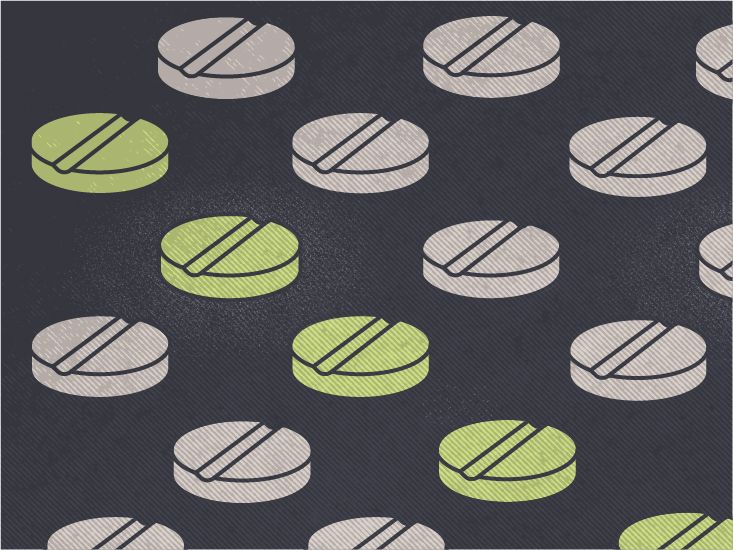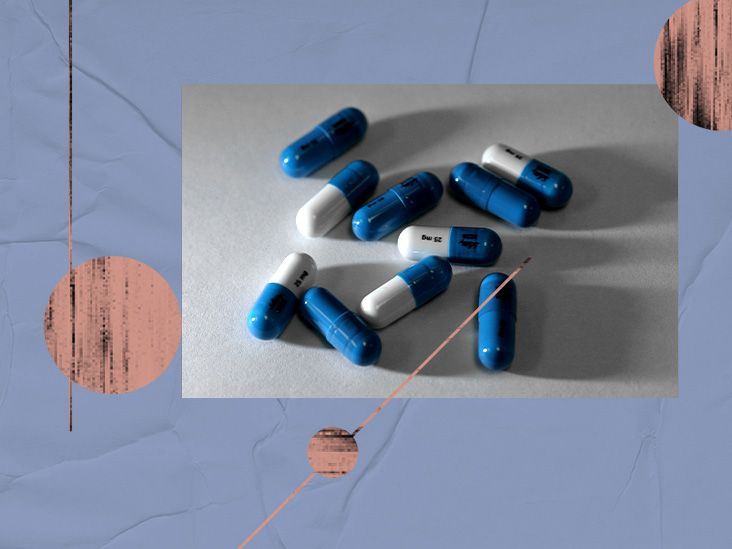Chocolate's Effects on ADHD Symptoms
Attention deficit hyperactivity disorder (ADHD) is a condition affecting concentration, focus, and impulsivity. With symptoms like inattention, hyperactivity, and restlessness, finding tasty snacks kids will eat that also help manage ADHD can be challenging.
This is where chocolate comes in. Chocolate contains compounds like caffeine and theobromine that provide a mild stimulant effect. Some research shows chocolate may help improve some symptoms of ADHD like attention and focus. However, effects are mixed and more study is needed.
Here's a deeper look at using chocolate as part of an ADHD-friendly snack routine.
The Stimulating Effects of Chocolate
Chocolate contains caffeine and theobromine, two naturally occurring stimulants. Caffeine is found in many plants, while theobromine is found almost exclusively in cocoa plants, the source of chocolate.
Studies show the caffeine and theobromine in chocolate can:
- Provide a quick energy boost
- Increase focus and alertness
- Improve reaction time
- Enhance mood
For these reasons, a small amount of chocolate may help offset some typical ADHD symptoms like distractibility, restlessness, and impatience.
Chocolate for Improved Cognition
Some research also indicates chocolate may enhance cognition, or mental processes like attention, memory, and problem solving.
One study had participants with severe chronic fatigue syndrome consume a chocolate drink mix twice daily for 8 weeks. The chocolate group showed significantly improved cognitive function, specifically mental fatigue, reaction time, and memory.
Another study found eating flavonoid-rich cocoa daily improved overall cognition as well as working memory and reasoning ability in older adults with mild cognitive impairment.
While study results are mixed, some evidence exists that tiny doses of stimulants like caffeine coupled with chocolate's flavonoids may provide cognitive enhancing effects that benefit issues with attention, focus, and impulse control in ADHD.
Optimal Dosage for Benefits
Research on chocolate for ADHD symptoms is limited. Experts generally recommend limiting caffeine intake to 2.5 mg per kg of body weight, up to 100 mg maximum for children. For a 50 lb child, that equals about 27 mg caffeine daily. For reference, an 8 oz cup of brewed coffee has about 95 mg caffeine.
The best approach is using chocolate as an occasional treat in small portions, not daily. Around 1 oz of dark chocolate has about 20 mg caffeine. Getting 10-20 mg caffeine along with chocolate's theobromine and flavonoids may provide benefits without overdoing stimulants.
ADHD-Friendly Properties of Chocolate
In addition to compounds that provide a mild stimulatory effect, chocolate has other properties that make it a smart occasional snack for kids with ADHD:
Energy Booster
Chocolate gives an energy boost to help counter the low energy and fatigue common with ADHD. The stimulants provide a pick-me-up to stay alert and engaged.
Focus Enhancer
By boosting levels of chemicals like serotonin, dopamine, and endorphins, chocolate may help improve symptoms like poor focus and distractibility.
Stabilizes Mood
The feel-good chemicals in chocolate and act of treating yourself can temporarily enhance and stabilize moods and ease anxiety.
Provides Memory Boost
Chocolate has been shown to improve blood flow to the brain and enhance memory consolidation and retention.
Satisfies Cravings
A small amount of chocolate can satisfy sweet cravings that might otherwise lead to poor snack choices like candy or baked goods.
Snack Ideas with Chocolate for ADHD
Here are some healthy, portion-controlled snack ideas using chocolate that may benefit kids with ADHD:
Cocoa Smoothie
Blend cocoa powder into a protein-packed smoothie with yogurt, milk, banana, and peanut butter.
Chocolate Granola Bars
Look for granola bars with cocoa or chocolate chips to provide fiber, protein, and grains along with the chocolate flavor.
Chocolate Avocado Pudding
Mix avocado, cocoa powder, honey, and vanilla for a creamy chocolate chia pudding packed with nutrition.
Chocolate Nut Mix
Make your own mix with almonds, walnuts, pepitas, and dark chocolate chips for a protein and antioxidant-rich crunch.
Chocolate Fruit Dip
Dip strawberries and apples into a chocolate-hazelnut or chocolate-yogurt dip for added produce.
Chocolate Milk
The flavonoids in cocoa combined with protein in milk makes chocolate milk a convenient, nutritious afternoon pick-me-up beverage.
Tips for Using Chocolate as Part of an ADHD Diet
When incorporating chocolate into a healthful eating plan for ADHD, keep these tips in mind:
Pick Dark Chocolate
Choose dark chocolate with at least 70% cocoa for more stimulation benefits and antioxidants than milk or white chocolate.
Watch the Sugar
Select chocolate low in added sugars, and combine it with healthier items like fruit, nuts, or yogurt to prevent sugar spikes.
Be Portion Aware
Stick to 1-2 ounces or less of chocolate as part of a balanced snack to prevent overstimulation and sugar crashes.
Don't Give Chocolate Daily
Reserve chocolate for a special treat just a couple times a week to prevent habituation and decreased effects.
Pair with Protein and Fiber
Help stabilize energy and hunger by serving chocolate alongside protein sources like nuts and fiber-rich fruits or whole grains.
Avoid Chocolate at Night
Don't serve chocolate after dinner or close to bedtime, as the stimulants can disrupt sleep, which exacerbates ADHD symptoms.
Healthier Chocolate-Based Snack Recipes for ADHD
Check out these tasty chocolate snack recipes loaded with nutrition to benefit kids with ADHD:
Chocolate Cherry Chia Pudding
Puree cherries with chia seeds, cocoa powder, milk, and vanilla for a superfood twist on chocolate pudding.
Chocolate Peanut Butter Banana Wrap
Spread peanut butter and chocolate chips on a whole wheat tortilla, top with banana slices, and roll up for chocolatey goodness.
Overnight Chocolate Oats
Mix oats, chia seeds, cocoa powder, peanut butter, and milk and refrigerate overnight for ready-to-eat chocolate oatmeal.
Rocky Road Trail Mix
Toss together roasted almonds, mini marshmallows, chocolate chips, and dried cherries for a chocolatey homemade trail mix.
Cocoa Date Energy Bites
Bind together dates, oats, cocoa powder, walnuts, and almond butter for no-bake energy bites with anti-inflammatory benefits.
ADHD Nutrition Guidelines
While the stimulatory effects of chocolate show some promise for ADHD, it should only be an occasional component of a healthy diet plan that:
Promotes Steady Energy
Focus on complex carbs from fruits, vegetables and whole grains to provide sustained energy rather than spikes and crashes.
Provides Good Fats
Salmon, walnuts, olive oil, avocados and chia seeds supply omega-3s that help support focus and learning ability.
Limits Refined Carbs and Sugars
Skip the simple sugars and fill up on fiber and protein instead to prevent fluctuating energy levels.
Ensures Adequate Protein Intake
Protein provides dopamine precursors to boost focus, attention, and learning capacity in the ADHD brain.
Increases Fruits and Veggies
Produce gives antioxidants and phytonutrients important for cognitive health and moderating impulsivity.
Prevents Dehydration
Drink plenty of water as even mild dehydration can negatively affect attention, memory, and self-control.
The Bottom Line on Chocolate and ADHD
Current research on chocolate and ADHD shows some promising results, at least in the short term. The stimulant compounds may provide a mild cognitive boost. However, more research is still needed.
When used occasionally in small portions along with other nutritious foods, chocolate can be part of a healthy, ADHD-friendly diet. Just be mindful of the right amounts and timing when giving chocolate to limit risks.
Chocolate certainly makes a tasty treat kids will love. Combined with protein, fiber and healthy fats, a small chocolate snack may offer brain-boosting benefits to help kids with ADHD focus, settle down, and manage symptoms.
FAQs
Is chocolate good for ADHD?
Small amounts of chocolate may help improve temporary focus and concentration in ADHD due to compounds like caffeine. But more research is still needed on chocolate’s effects.
What natural supplements help with ADHD?
Omega-3 fatty acids, iron, zinc, vitamin D, and magnesium supplements may help reduce some ADHD symptoms. But consult a doctor before giving supplements.
Does chocolate improve memory and concentration?
Some studies show chocolate can boost blood flow to the brain and enhance aspects of cognition like memory, focus, and concentration, especially in small doses.
Is chocolate good for kids with ADHD?
Very small amounts of chocolate may help with attention and concentration for short periods in kids with ADHD. But chocolate works best as an occasional treat alongside an overall healthy ADHD diet.
Disclaimer: This article is for informational purposes only and does not constitute medical advice. Always consult with a healthcare professional before starting any new treatment regimen.
Related Coverage
While black widow spiders inhabit much of North America, the cold climate of Maine only sparsely supports populations currently. Still climate change impacts may allow expansion....
ADHD screening quizzes help women identify symptoms like inattention, disorganization and hyperactivity. If you score high, discuss ADHD testing with your doctor....
Learn how Quillivant XR interactions with drugs, alcohol, and supplements can affect your health. Stay safe and informed....
ADHD time blindness makes time feel elusive. Learn why it happens and find practical strategies to manage your unique relationship with time....
The FDA has approved multiple generics for Vyvanse pending patent disputes. Low cost versions could launch in 2023, expanding access and lowering prices....
Is Strattera a controlled substance? Get facts on Strattera controlled substance status, its uses, side effects, and how it compares to other ADHD medications....
Find out which Azstarys side effects are common, moderate or serious, how to manage them, and when to seek medical help....
ADHD involves challenges with focus, impulsivity, and managing behavior. Healthy lifestyle habits, treatment plans, and good sleep hygiene can provide relief....
Struggling with ADHD reading difficulties? Find practical strategies, tools, and tips to improve focus, comprehension, and enjoyment while reading....
Discover how to locate Adderall and deal with the shortage, including tips on checking independent pharmacies, using mail order, alternatives like Vyvanse, and coping without meds....









